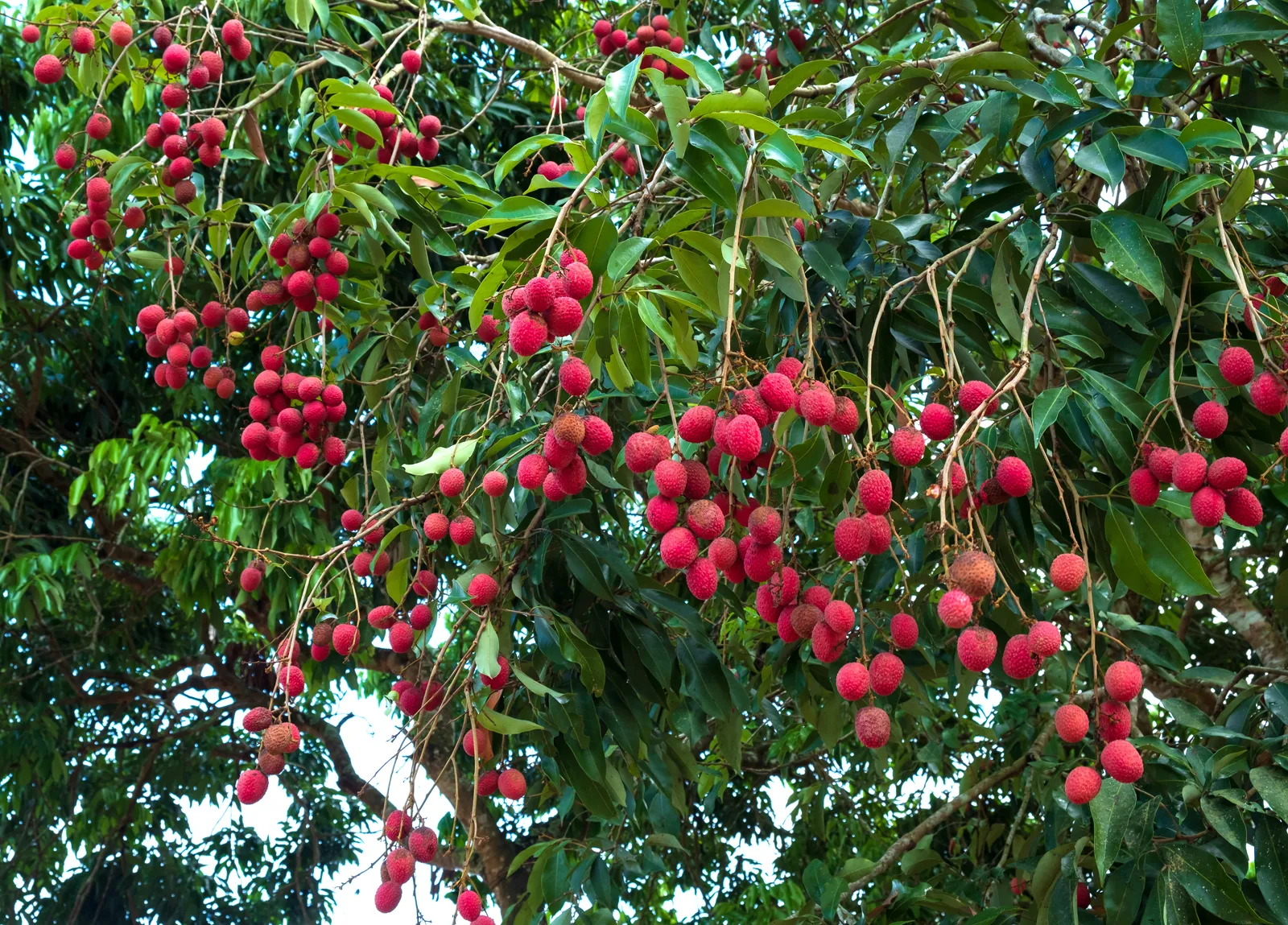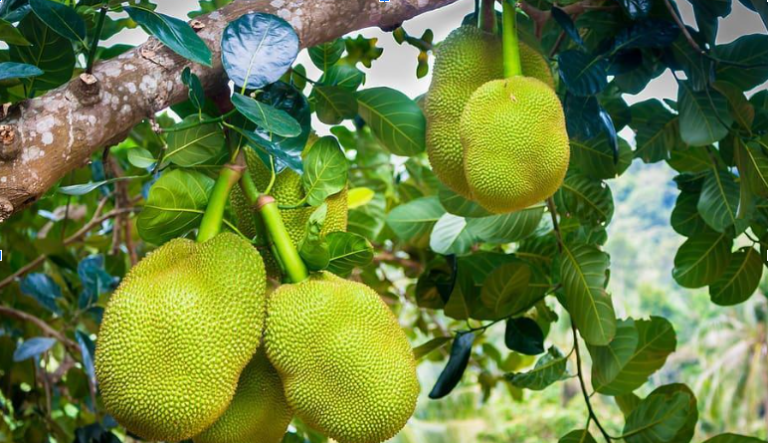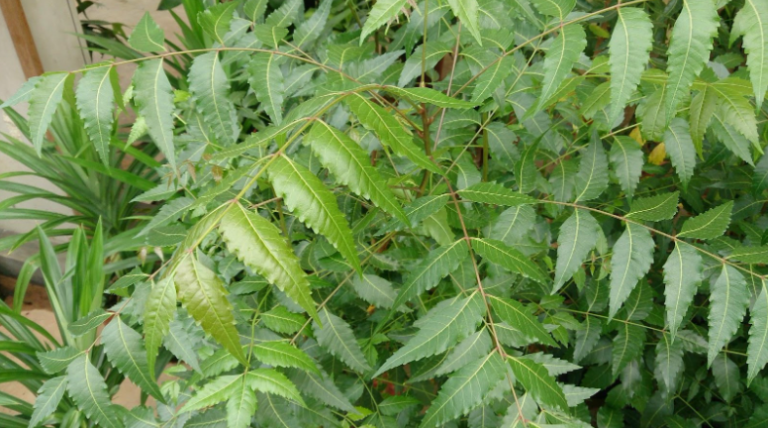The Lychee Tree
The Lychee Tree (Litchi chinensis)
The Lychee tree (Litchi chinensis), a tropical evergreen native to the Guangdong and Fujian provinces of China, is often regarded as a symbol of life and vitality in many cultures. Known for its fragrant, juicy fruit, the tree is not just appreciated for its delectable harvest but also for its enduring presence in the tropical and subtropical landscapes around the world. The Litchi chinensis, commonly called the Lychee, is an essential part of the ecosystem, culture, and agriculture of the regions it inhabits, earning it the title of “tree of life.
The Lychee Tree’s Growth and Structure
The Lychee tree is an impressive sight, typically growing to a height of 30 to 40 feet (9 to 12 meters). Its broad, dense canopy provides ample shade in tropical climates. The tree’s leaves are glossy and dark green, oval in shape, and arranged alternately along the branches. The leaves have a leathery texture, which helps the tree conserve water in hot environments. Its trunk is sturdy, with a rough, grayish-brown bark that provides the tree with a robust structure to support its rich foliage.
The Lychee tree thrives in well-drained, sandy-loam soils and is particularly suited to tropical and subtropical climates where rainfall is abundant during the growing season. The tree has a deep taproot system that helps it access water from deeper soil layers, which is crucial for surviving dry spells. This deep-rooted nature allows the Lychee tree to withstand high temperatures and drought conditions, making it resilient even in regions where water might be scarce.
Floral Development and Pollination
The flowering process of the Lychee tree is equally remarkable. Lychee trees produce small, greenish flowers that are arranged in large, fragrant panicles. These flowers appear in spring and serve as a precursor to the tree’s iconic fruit. Interestingly, Lychee trees are dioecious, meaning they have separate male and female trees. Pollination, therefore, is crucial for fruit production, and this is often achieved by insects like bees and other pollinators.
While the flowers themselves may not be visually striking, the aroma they emit during flowering is intoxicating. In tropical orchards, the fragrance of the flowers fills the air, attracting pollinators that play a vital role in the successful development of the fruit. Male trees produce pollen that is transferred to female flowers, facilitating the formation of the Lychee fruit.

sweet fruit Lychee
The Fruit: A Sweet Gift of Nature
The Lychee fruit is a fleshy, round or oval drupe that grows in clusters along the branches of the tree. The fruit’s distinctive appearance, with its rough, red or pink skin, is part of what makes the Lychee so recognizable. Underneath the tough outer shell lies a translucent, white flesh that is juicy, sweet, and slightly floral in taste. Inside, a shiny, brown seed rests in the center, which is not edible.
The fruit typically ripens in late spring to early summer, though this can vary based on the climate and growing conditions. In tropical regions, Lychee fruits are a seasonal treat, eagerly awaited by consumers and cultivators alike. Their harvest is often a time of celebration, marking the culmination of months of growth and care. The tree can produce fruit for several decades, with some trees reaching a productive age of 50 years or more, providing sustenance for generations.
The fruit’s high water content and natural sugars make it a refreshing and energizing snack. Lychees are also packed with vitamin C, antioxidants, and minerals such as potassium, magnesium, and copper. They have been used in traditional medicine in various parts of Asia for their purported health benefits, including boosting immunity and promoting digestion. The sweet and refreshing taste of the Lychee makes it a popular addition to fruit salads, beverages, and desserts, as well as a key ingredient in many Asian cuisines.
Lychee Tree’s Cultural Significance
Beyond its agricultural and nutritional value, the Lychee tree holds deep cultural significance in many parts of the world, especially in China, where it has been cultivated for over 2,000 years. The tree is often referred to as the “Tree of Life,” not just because of the fruit it produces but also because of the tree’s resilience and longevity. In Chinese culture, Lychees are symbolic of good fortune, love, and abundance.
The tree’s fruit is often associated with prosperity and celebration, and Lychees are traditionally given as gifts during important events such as weddings, festivals, and New Year celebrations. In Chinese folklore, the Lychee is also a symbol of love and romance. The fruit’s delicate and sweet flavor is often used to symbolize the sweetness of relationships, and in ancient times, the Emperor of China would send Lychees as a gesture of love and devotion to his consorts.
The Lychee tree is also revered in many Southeast Asian countries, where it is a symbol of vitality, resilience, and abundance. In countries like Vietnam, Thailand, and India, the Lychee tree is seen as a source of life and energy, providing not only food but also a connection to the land and community. Lychee trees are often planted around homes and in gardens, serving as both a source of shade and a reminder of the natural cycles of growth and renewal.
The Tree’s Ecological Role
The Lychee tree plays an important role in the ecosystems where it is found, both in natural and cultivated settings. As an evergreen tree, it provides year-round cover and protection for various species of birds and insects. Its dense canopy offers shelter from the intense tropical sun, making it a valuable addition to gardens and orchards. The flowers of the Lychee tree attract a variety of pollinators, including bees, butterflies, and moths, which are essential for the pollination of not just Lychee trees but also other nearby plants.
In orchards, the Lychee tree helps maintain soil health by reducing erosion and providing organic matter through its fallen leaves and branches. The deep root system of the tree helps prevent water runoff and aids in maintaining the water cycle in the surrounding environment. Additionally, the tree’s ability to adapt to arid conditions makes it a sustainable choice for agroforestry in areas prone to drought, providing both economic and environmental benefits.
Sustainability and Challenges
While the Lychee tree is an important crop in many parts of the world, its cultivation is not without challenges. The tree requires a specific set of conditions to thrive, including a tropical climate with distinct dry and wet seasons. As climate change continues to affect weather patterns, Lychee farmers face the challenge of unpredictable rainfall and temperature fluctuations, which can lead to crop failure or reduced yields. Furthermore, the tree’s need for pollinators means that the decline in bee populations due to habitat loss and pesticide use is a growing concern for Lychee cultivation.
To mitigate these challenges, researchers and farmers are focusing on sustainable agricultural practices, such as integrated pest management, organic fertilizers, and water-saving irrigation techniques. Some growers are also experimenting with new Lychee varieties that are more resistant to environmental stresses, ensuring that this “Tree of Life” can continue to thrive in the face of a changing world.
Conclusion
The Lychee tree (Litchi chinensis) is much more than just a fruit-bearing plant; it is a living testament to the resilience and beauty of nature. With its rich history, cultural significance, and vital role in ecosystems, the Lychee tree has earned its place as the “Tree of Life.” As we move forward, it is essential that we continue to honor and protect this remarkable tree, ensuring that future generations can enjoy its fruit, its shade, and the many benefits it provides to both people and the environment.







